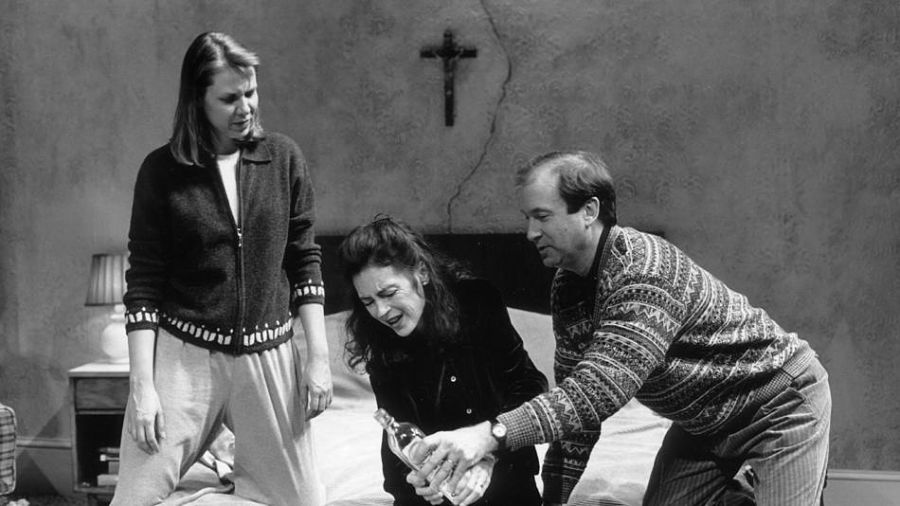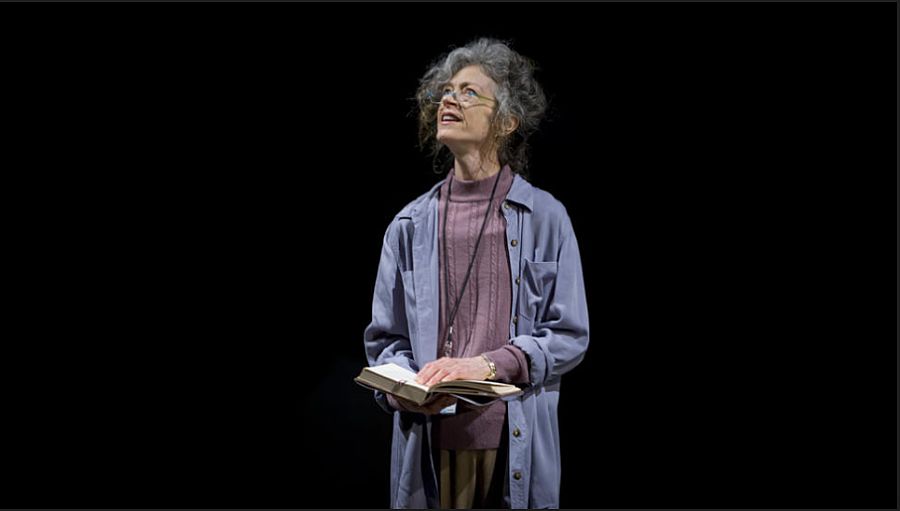Martha Lavey, artistic director of Chicago's Steppenwolf Theatre Company from 1995 to 2015, died last week at the age of 60.
Martha Lavey first came into the Steppenwolf orbit when John Malkovich cast her as a nude extra in what was, by all accounts, an horrifically misconceived, cringe-worthy production of Christopher Hampton’s Savages. Despite a particularly heinous brown wig and bad body paint, she gave (according to legend) an absolutely committed, totally fearless performance—a preview of the talent she would bring to (among others) the Goodman, Victory Gardens, Remains, and Northlight (where David Petrarca described directing her as “channeling the energy of a hurricane, the intellect of a scholar and the ferociousness of a lioness into a bottle”).
Somewhere along the way, she managed not only to act but to complete her doctoral studies just after joining the Steppenwolf ensemble in 1993. When the company’s artistic directorship came open less than two years later, few outside of Chicago, at least, expected the testosterone-laden Steppenwolf—a culture where the founders were still called “the boys”—to even consider a woman to lead, much less one whose ensemble status was still so new. But given not only Martha’s fearlessness, commitment, and imagination, but also her relentless curiosity, searing intellect, and passionate belief in and respect for artists, how could they have chosen anyone else?
She did, of course, continue to act—in more than 30 productions, in fact. Fellow actors speak especially of her work in I Never Sang for My Father, and in both The Designated Mourner and Aunt Dan and Lemon, where the exquisite intelligence of Wallace Shawn found a perfect match. But nurturing the institution, not acting, became her life’s priority, setting aside her own ambitions when the theatre needed her most. (How many of us still regret that she stepped down from plans to play the Homebody in the Tony Kushner play.)

And what Steppenwolf achieved under her leadership was remarkable: doubling the size of the ensemble, diversifying the company, exporting Buried Child and Cuckoo’s Nest to the Barbican as well as to Broadway, Side Man to Melbourne, Glengarry Glen Ross to Dublin, and, of course August: Osage County, whose production played on three continents and which is now as seminal to the company’s identity as Balm in Gilead had been decades before.
Inheriting a theatre whose original glorious company had largely departed for Hollywood and whose survival was tenuous, she transformed it from one known for its actors to one known equally for directors—with Martha especially proud of the emergence of women like Tina Landau, Amy Morton and Anna Shapiro, to name a few—and writers, culminating with an entire season of new plays to celebrate the theater’s 30th anniversary.
For several years, she surrendered the upper stage to theatres for young audiences, theatres of color, and LGBT theaters, all of whom she fiercely supported even when these relationships could grow fraught; she offered them visibility and technical and administrative support, and laid herself and her staff open to sharing anything they knew. The opening of the School at Steppenwolf to train the next generation of artists, the opening of the Garage Theater to support new work by a next generation and Off-Loop companies, programs for teens and families, and the platforms created for audience discussion after every show all began under Martha.
Through it all, she deftly maneuvered the politics of ensemble life and animated her board to pursue not growth but greatness—a vision of theatre as public square—and, with her deeply valued management partners Michael Gennaro and David Hawkanson, brought an enviable size and stability to the company. She in short transformed the company from one envied for its famous acting ensemble to one whose institutional behavior was emulated by others, even as she continued to push the artistic achievements ever higher.
Accolades followed—9 Tonys, a Pulitzer, countless Jeffs, Oliviers, the National Medal of the Arts (Steppenwolf is still the only producing theatre to ever be so honored), a Sarah Siddons, and an honorary doctorate for Martha herself. And the deluge of online tributes from artists around the country in the wake of her passing attests to her impact. The eulogies are filled with stories emphasizing her availability to meet anyone, her razor-sharp perception, and her ability to instill in others a belief in their own merits and desserts.
Martha always deflected the spotlight and the praise away from herself and onto not only Steppenwolf but the larger Chicago theatre community, for whom she was one of the fiercest advocates. Her leadership extended to the board room and to the national theatre field, where her ability to guide and chide her peers (“We’re gassing on here”) as president of the TCG board, or to inspire her colleagues at theatre conferences across the country, were well known. Hers was a great mind—probing, questioning, grappling especially with the role of theatres in America, not as they were created, but as her generation was required to reimagine and reanimate them. She was, for me at least, as good—no, as remarkable and great—an artistic director as any I have ever seen.
All of this said, my most immediate memories of Martha involve Topo Gigio’s in Chicago, where Martha would arrive always slightly late, a wrap thrown around her shoulders, that sweep of hair with its white forelock piled high in a kind of Mrs.-Robinson-meets-Miss-Havisham cloud. Even without asking the waiters—all of whom adored her, and knew where to seat her—she was brought bruschetta, two portions of sautéed spinach, chardonnay, and ice water, with four packs of Sweet ‘N Low, two slices of lemon, an extra glass of ice and a straw. Over several hours we’d dissect books and plays, politics and politicians, art and artists, our personal lives (she more occasionally and circumspectly, as befit the daughter of a CIA agent). She was voraciously curious about life writ large, piercingly intelligent, hungry for details, and direct or even blunt without the least hint of malice. Conversations with her were rigorous and reflective, and I at least left each dinner convinced that my work, my thinking, I myself, were better than when I had sat down at the table—a gift from her that many in our field experienced in their times with her as well. I can only hope she at least on occasion felt the same.
In a graceful and generous transition, Martha and David Hawkanson ceded leadership to Anna Shapiro and David Schmitz, both of whom she adored; she disclosed her plans to me before the public announcement. Over our last few dinners and during numerous phone calls in between, we talked about what would be next for her. Teaching, perhaps? Running a foundation? Acting again? Nothing felt quite right to her. I kept urging her to write, knowing how she loved language and believing her to be, in addition to one of the field’s deepest thinkers, one of its most eloquent spokespeople.
The timing of her first stroke—after her last day at Steppenwolf but before the various galas and luncheons that had been designed to honor her had been held—the wresting away of language, or at least the ability to convey that language, and her subsequent inability to read, all still feel cruel beyond comprehension to me. Many of us thought, especially in light of the remarkable burst of progress she made, that she would be the Patricia Neal of our generation, conquering the unconquerable and returning in triumph, whether to the stage or the classroom or the page to new acclaim. Clearly the gods had other plans.
I find it impossible to imagine at this moment that the ragged hole she leaves in Chicago, in the theatre, in our hearts, will ever be filled, even while I and so many others are filled with enormous gratitude that she came into our lives. Flights of angels…
Ben Cameron is president of the Jerome Foundation. He served as executive director of Theatre Communications Group from 1998 to 2006.


